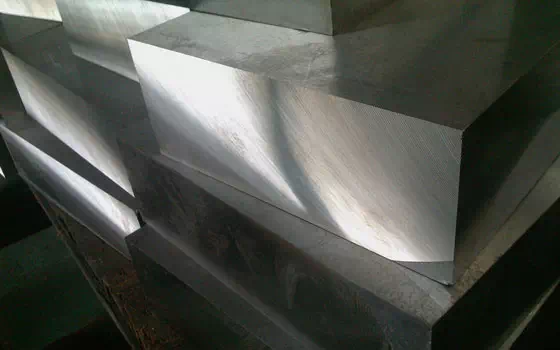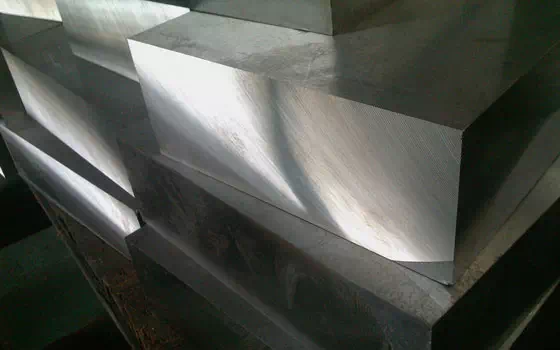Welcome to Zhishang Steel Co., Ltd.
TEL: (Gavin) +86-15665898999 | Email : info@zhishangsteel.com

Carbon tool steel is an important industrial material, its number, performance and use have their own unique characteristics. First of all, let's look at the number of carbon tool steel. In general, the grade of carbon tool steel is expressed as TXX, where X represents a few thousandths of the average carbon content in the steel. For example, T8 represents a carbon tool steel with an average carbon content of 0.8%. When the quality is higher, it is usually followed by the symbol A, which is called high quality.
The composition of carbon tool steel is characterized by carbon content between 0.65% and 1.35%, and the content of impurities such as sulfur (S) and phosphorus (P) is low. The properties of this steel are characterized by high strength, high hardness and good wear resistance. However, in order to give full play to its performance characteristics, it must be heat treated for normal use.
Next, let's introduce low alloy tool steel. Low alloy tool steel is made by adding some alloying elements on the basis of carbon cutting tool steel. The content of these alloy elements is usually less than 5%, so it is called low-alloy cutting tool steel. The carbon content of low-alloy cutting tool steel is between 0.85% and 1.5%, and the commonly used alloying elements are silicon (Si), chromium (Cr), indium (In), tungsten (W), yttrium (Y) and so on. The final heat treatment of low alloy tool steel is quenching and low temperature tempering.

High speed steel is a kind of high carbon and high alloy tool steel suitable for manufacturing high speed cutting tools. When the cutting temperature is higher than 600 degrees or so, its hardness does not decrease significantly, and it can still maintain good cutting performance, so it is also known as "front steel". The carbon content of high-speed steel is between 0.7% and 1.65%, and the steel also contains tungsten (W), chromium (Cr), vanadium (V), cobalt (Co) and other alloying elements, and its total amount exceeds 10%. Because of the high carbon content of steel and the large amount of alloying elements, there is a fishbone carbide in the cast structure of the billet. Therefore, it can only be broken by forging and distributed evenly. The heat treatment process of high-speed steel is annealing and quenching (after tempering 550-570 degrees three times). The commonly used high-speed steels are W18Cr4V and W6Mo5Cr4V2.
Die steel is a type of steel used to make cold work dies and hot work dies. Cold work die steel is used to make die steel that deforms metal in cold state, such as cold die, cold die and so on. In order to ensure the mold after heat treatment to obtain high hardness and high wear resistance, cold work die steel contains a relatively high amount of carbon, in addition, a certain amount of alloying elements such as chromium (Cr), indium (In), iron (i), yttrium (y), oxygen (o), vanadium (V) and so on. Hot work die steel is a kind of die that deforms the metal in the hot state, such as hot forging die, hot extrusion die, open forging die, etc. Hot work die steel should have high strength, toughness, high temperature wear resistance and thermal stability, and should have good thermal fatigue resistance. The hot work die steel is made of medium carbon alloy steel, the carbon content is 0.5%, and the alloying elements added are chromium (Cr), nickel (Ni), manganese (Mn), silicon (Si), oxygen (O), tungsten (W), vanadium (V) and so on.
Finally, let's look at measuring steel. Measuring steel is the steel used to make various measuring tools. The measuring tool is to measure the size, must have an accurate and stable size, therefore, the steel with the measuring tool should have high hardness, high wear resistance and stable size. There is no special steel for measuring tool steel, and the tool steel and rolling bearing steel described above can be used to make measuring tools. The pre-heat treatment of the measuring tool is the same as that of the general cutting tool steel, with spheroidizing annealing. The final heat treatment (quenching and tempering) is somewhat different, because it is important to ensure dimensional stability during the heat treatment of the measuring tool. Therefore, a cold treatment of about -80 degrees should be arranged after quenching to eliminate the residual austenite structure, and a low temperature tempering of 140-160 degrees after cold treatment to obtain tempered martensite and dispersed carbide structure.

Zhishang Steel has always been a pioneer in custom steel and special supplies, and has been recognized for its efforts in enhancing work efficiency and product quality. In addition to ISO9001:2015 certification, we also adhere to strict quality policies and proprietary procedures. If you have any questions, please contact us to provide the best type of product solution for your pre-painted, coil coating metal process, we will closely support after-sales service to ensure that your subsequent problems can be solved in a timely manner, if you have any questions, please send email to info@zhishangsteel.com, we look forward to serving you.

Zhishang Steel, specializing in domestic steel products trade, warehousing, processing and other services. The team has four service teams: Shandong Zhishang Steel Co., LTD., Shandong Zhiyiheng Trading Co., LTD., Tai 'an Zhishang Economic and Trade Co., LTD., Shandong Zhishang Steel Structure Co., LTD. Mainly engaged in steel coil, coated, stee···